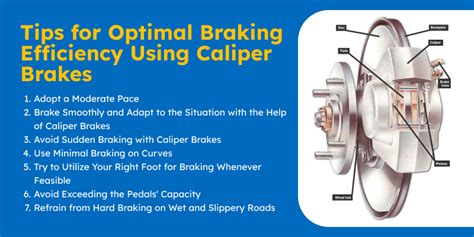Achieve Optimal E-Brake Performance with These Tips
Your emergency brake, or parking brake, is a critical safety feature. While you might not use it daily, its proper function is paramount for preventing unintended vehicle roll-away and ensuring safety in emergencies. Neglecting your e-brake can lead to costly repairs and potentially dangerous situations. This guide delves into achieving optimal e-brake performance, covering everything from regular maintenance to troubleshooting common problems.
How Often Should I Check My Emergency Brake?
Regular inspection is key to preventing problems. You should check your emergency brake's effectiveness at least monthly, or more frequently if you live in an area with extreme weather conditions or frequently park on inclines. A simple pull test, ensuring the brake holds firmly, is sufficient for a basic check. However, a thorough inspection, including checking the cable for fraying or damage, should be part of your regular vehicle maintenance.
What Causes an Emergency Brake to Fail?
Several factors can contribute to e-brake failure. Let's examine the most common:
Worn Brake Shoes or Pads: Over time, friction wears down the brake shoes or pads, reducing their gripping power. This is the most frequent cause of reduced e-brake effectiveness.
Damaged or Corroded Cables: The cables connecting the lever to the brake mechanism can become corroded, frayed, or stretched, hindering their ability to transmit the necessary force. This is particularly common in areas with harsh winters and road salt.
Adjustments: The e-brake mechanism often requires periodic adjustment to compensate for wear. Improper adjustment can lead to either ineffective braking or excessive force required to engage the brake.
Contaminated Brake Components: Dirt, grime, and moisture can compromise the effectiveness of the brake components. Regular cleaning can help prevent this.
How Do I Adjust My Emergency Brake?
Adjusting your emergency brake is usually a relatively straightforward process, though it varies depending on the vehicle's make and model. Consult your owner's manual for specific instructions. Improper adjustment can damage the braking system, so it's crucial to follow the manufacturer's guidelines. If you're uncomfortable performing the adjustment yourself, it's best to take your vehicle to a qualified mechanic.
How Can I Prevent Emergency Brake Problems?
Proactive maintenance is the best way to ensure optimal e-brake performance:
- Regular Inspections: As mentioned, monthly checks are recommended.
- Professional Service: Have a mechanic inspect your e-brake system as part of your regular vehicle maintenance schedule.
- Keep it Clean: Periodically clean the brake components to remove debris and moisture.
- Avoid Excessive Force: Applying excessive force when engaging the e-brake can damage the system.
What Should I Do If My Emergency Brake Doesn't Work?
If your emergency brake feels weak or ineffective, do not ignore it. This is a serious safety concern. Immediately have your vehicle inspected by a qualified mechanic. Driving with a faulty e-brake is unsafe and could lead to accidents.
Can I Drive with a Faulty Emergency Brake?
While you might be able to drive with a slightly weak e-brake, it's extremely risky. A malfunctioning e-brake poses a significant safety hazard, particularly on inclines or in emergencies. Do not drive with a faulty emergency brake. Get it repaired immediately.
How Much Does Emergency Brake Repair Cost?
The cost of repairing a faulty emergency brake varies widely depending on the specific problem, your vehicle's make and model, and the labor rates in your area. Minor adjustments might be relatively inexpensive, while significant repairs, such as replacing cables or brake shoes, can be more costly.
This comprehensive guide provides essential information to ensure the optimal performance of your emergency brake, a critical safety component often overlooked. Remember, regular maintenance and prompt attention to any issues are crucial for your safety and peace of mind.

